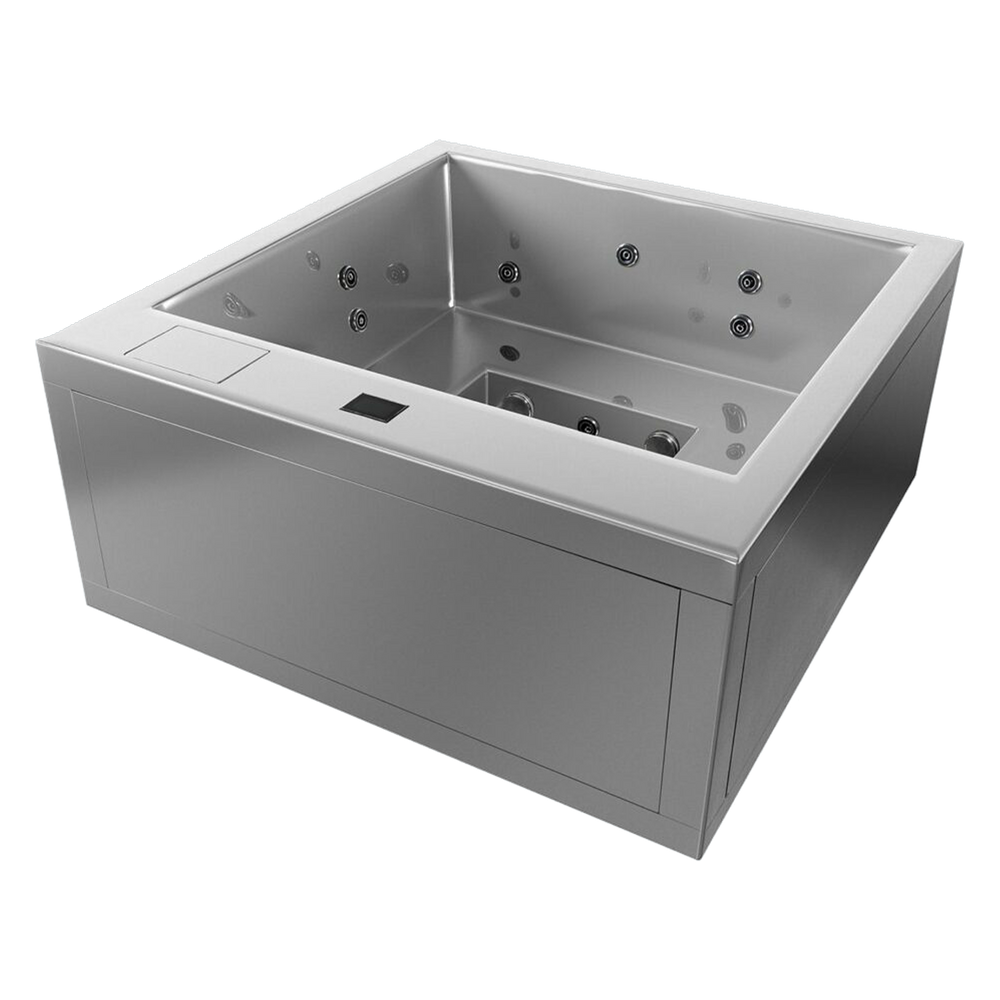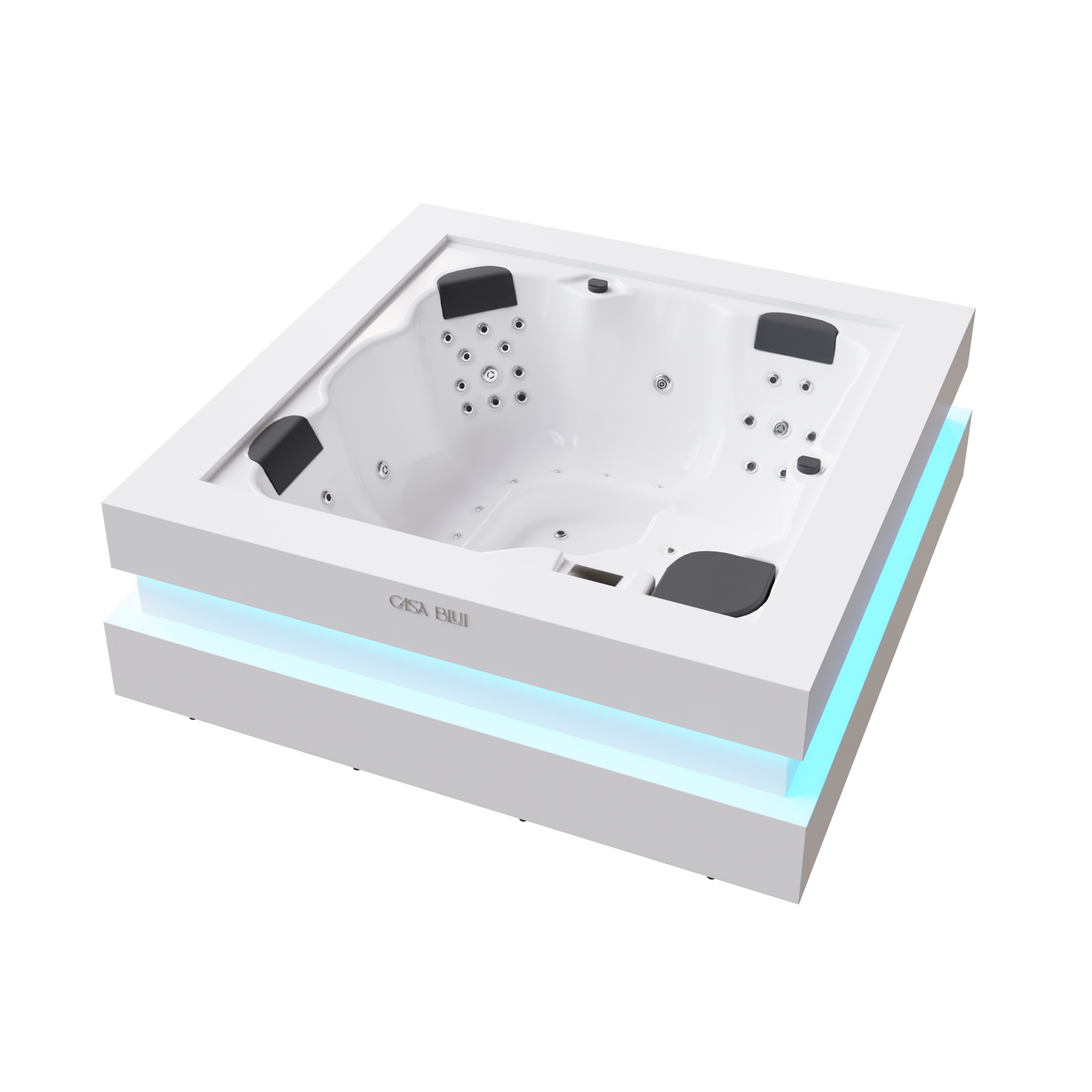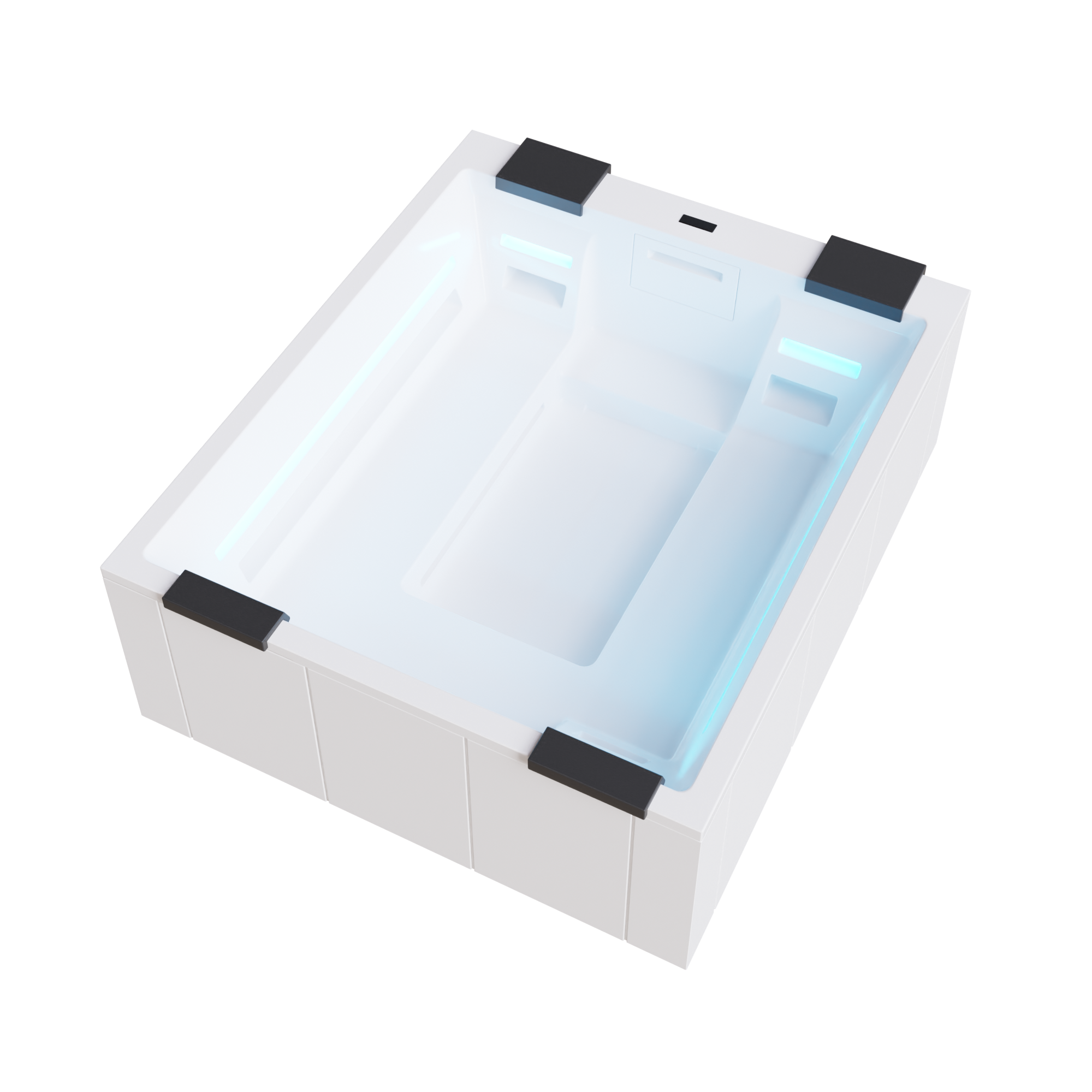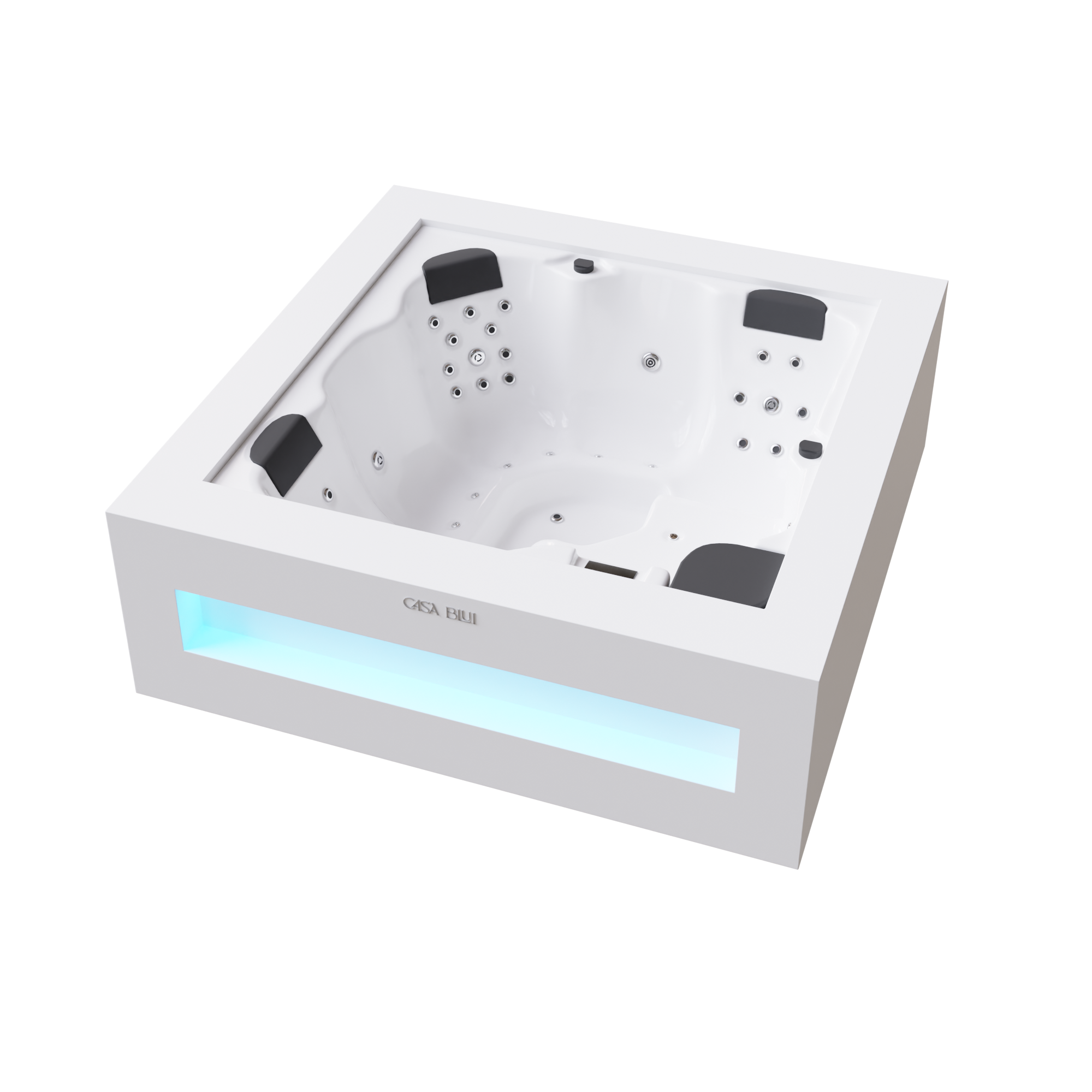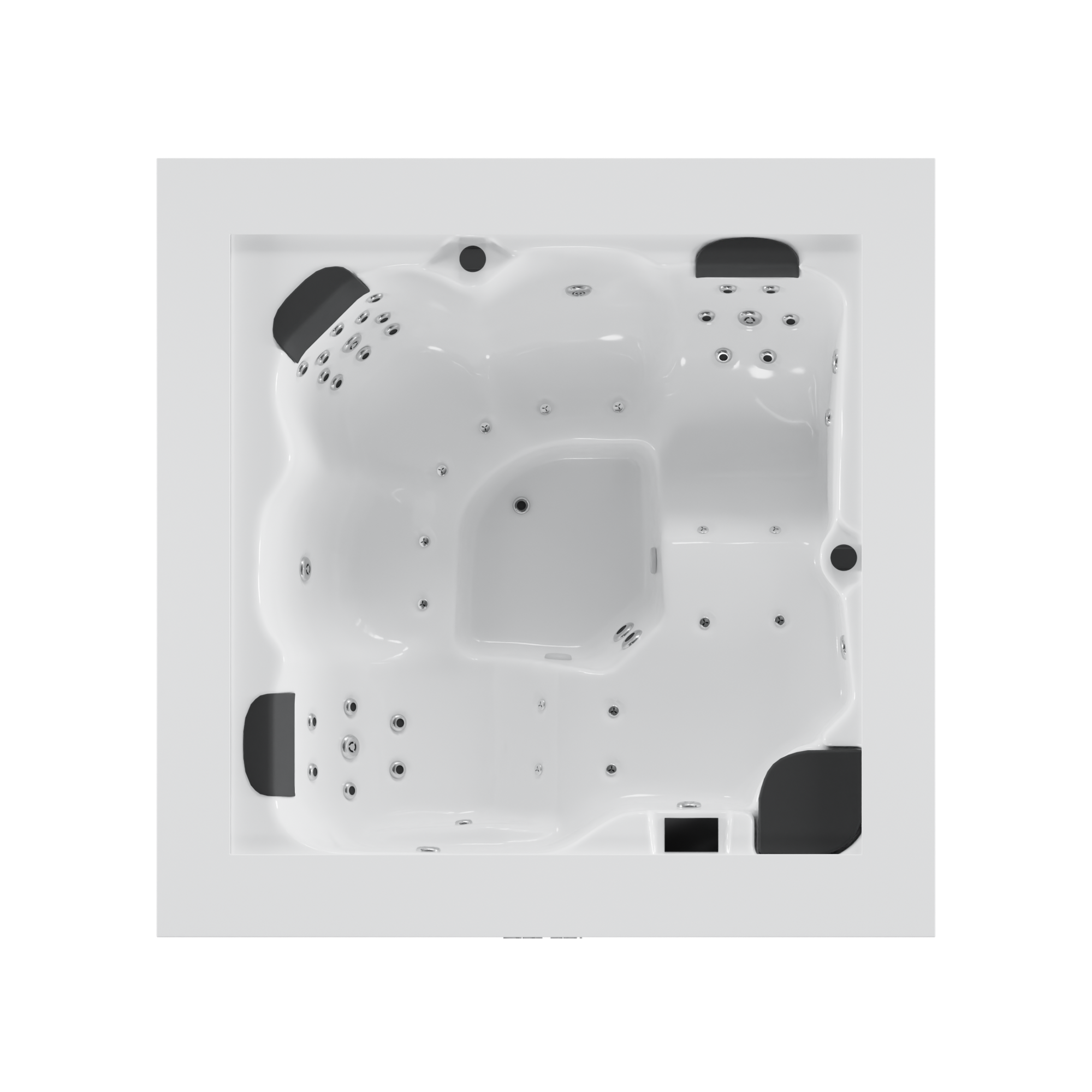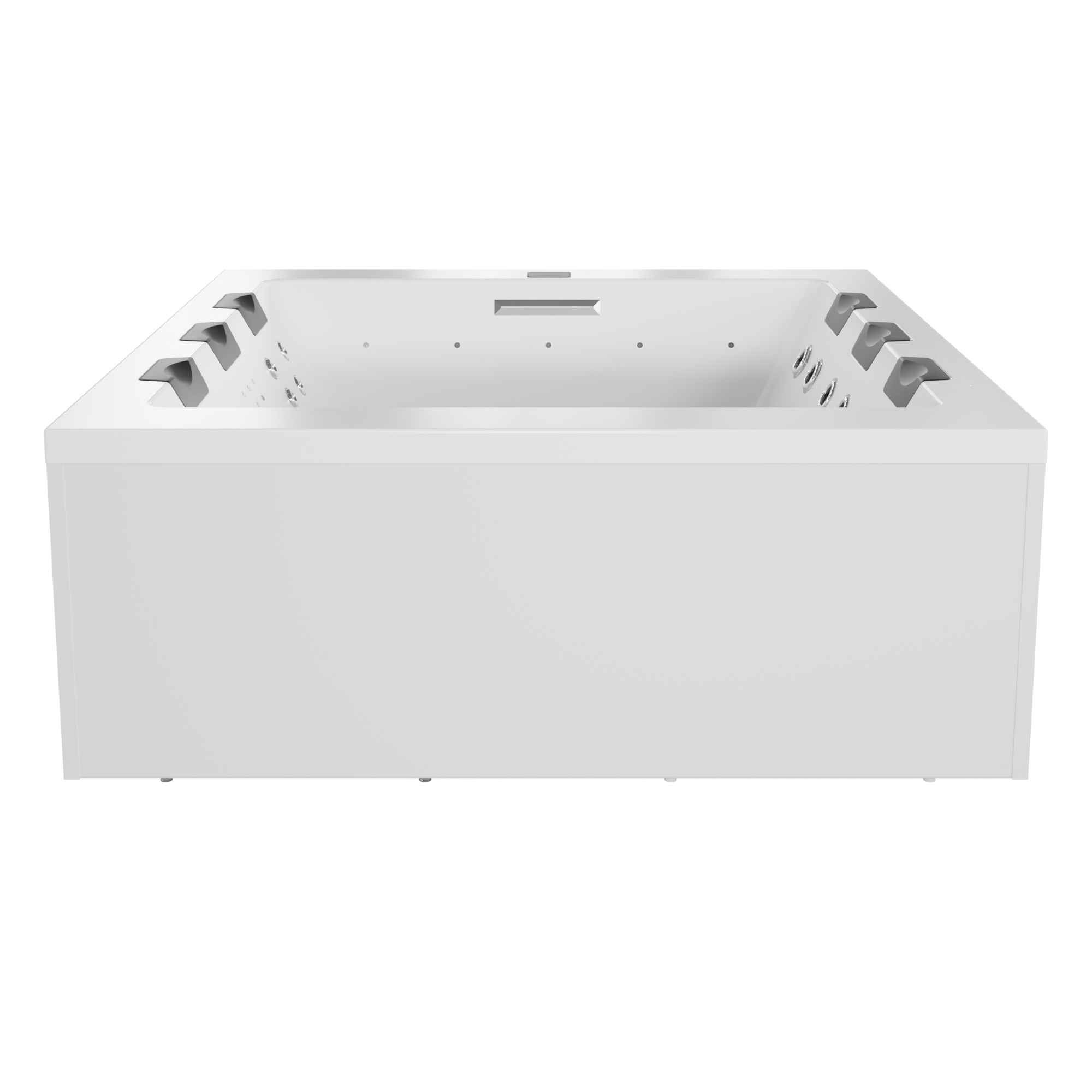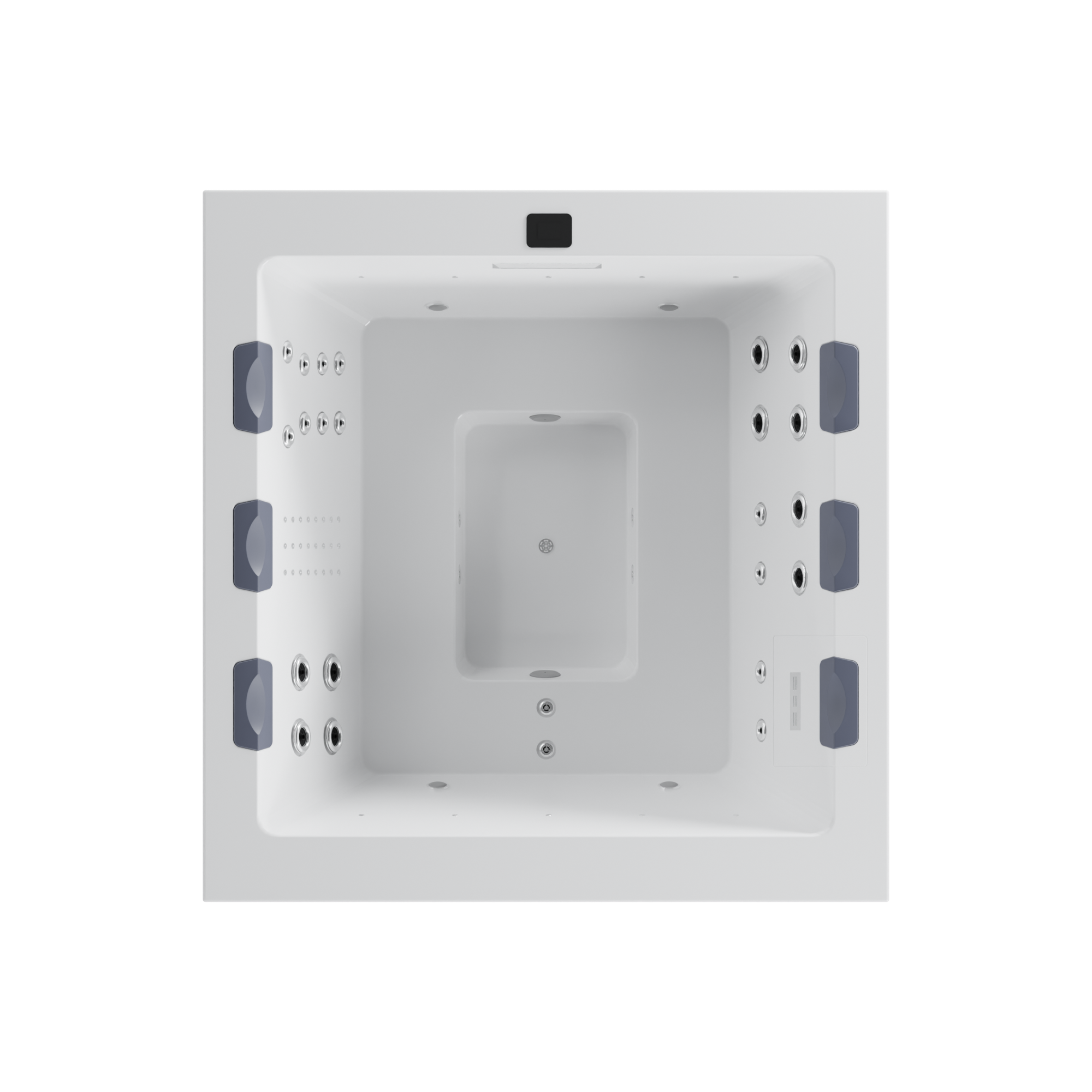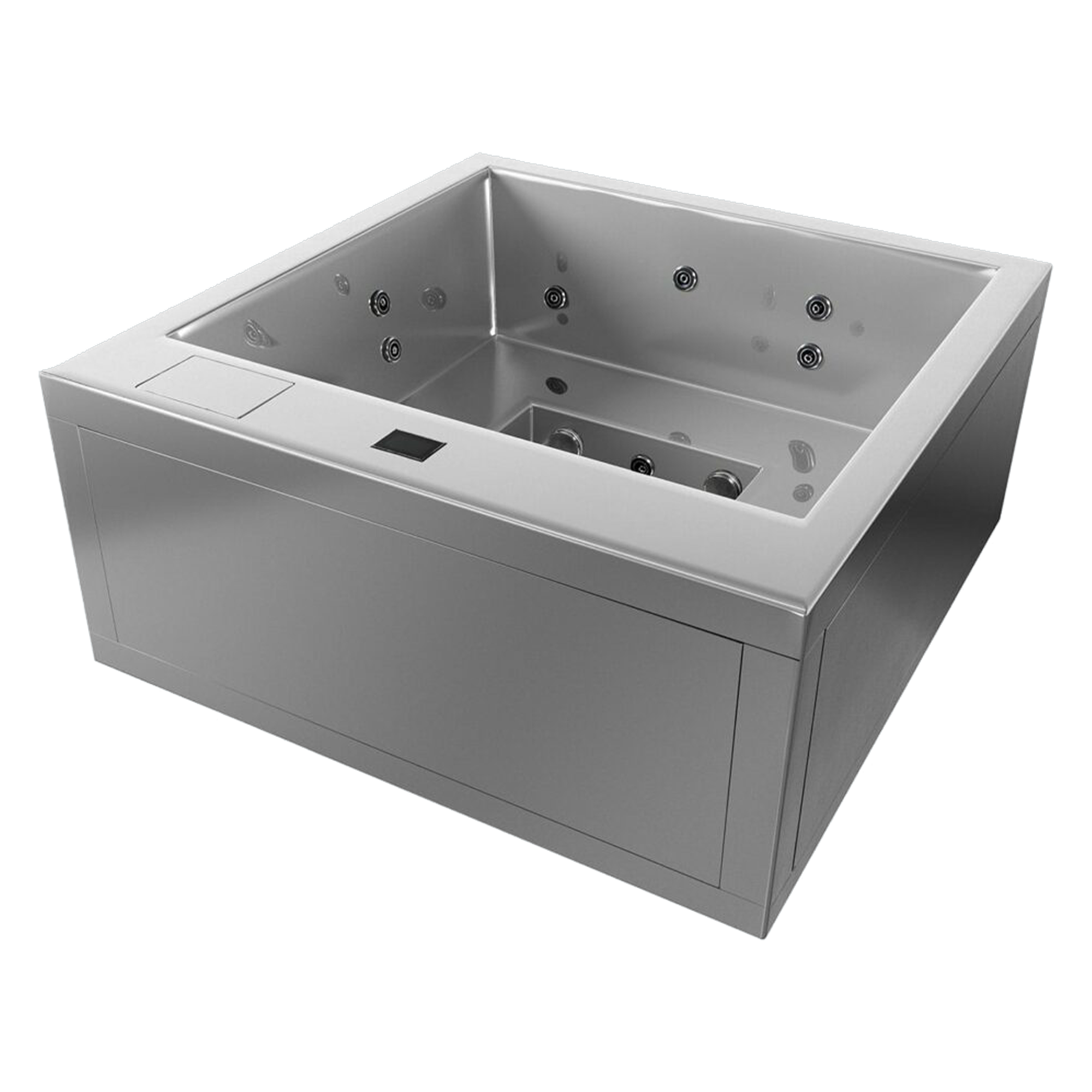Casa Blui Blog
How Many Years Will My New Hot Tub Last?
By andrei newman

So, you've just invested in a brand-new designer hot tub, and you're likely wondering how long it will last. It's a common question we hear, and rightly so. After all, a hot tub isn't just a purchase; it's an investment in relaxation, health, and quality time.
The lifespan of your hot tub can vary greatly, depending on several factors. These include the tub's quality, how well you maintain it, and how frequently you use it. Let's look at these aspects to understand better how many years you can expect your new hot tub to last.
4 Factors That Affect a Hot Tub's Lifespan
Let's look at these aspects to understand better how many years you can expect your new hot tub to last.
1. The Quality of Materials
Lifespan varies across brands due to the differing quality of materials. Brands offering cheaper models possibly use lesser-quality materials, signaling a shorter lifespan. On the other hand, pricier hot tubs from reputable brands often utilize high-grade materials and parts, leading to an extended product life. For example, Hayward excels in producing durable and efficient pumps, Jandy is renowned for its reliable spa filters and automation systems, and Balboa Water Group specializes in advanced heaters and control systems.
2. The Type of Materials
Plastic parts, prone to weakening when exposed to hot tub chemicals, might accelerate wear and tear, decreasing your hot tub's lifespan. Regularly clean these plastic parts to prevent accelerated degradation and prolong the life of your hot tub. Maintenance is still essential for components made from more durable materials, like Corian, which are less susceptible to chemical damage. Still, they generally offer a longer lifespan compared to regular plastic parts.
3. Your Maintenance Practices
Actions such as cleaning the filter, examining hardware and wiring, and maintaining optimal water chemical balance play significant roles in your hot tub's lifespan. Keep the water pH between 7.2 and 7.6, as acidic or unbalanced water can damage the hot tub components and harm users.
Proactive measures, such as flushing the lines, checking the cover, and scheduling tune-ups, will indirectly extend your hot tub's lifespan. A hot tub cover protects your tub from the sun's UV rays and prevents mildew growth, helping to maintain its condition.
4. Your Usage Patterns
Your spa usage habits—including the frequency of use, number of users, and attention to cleanliness—also help determine the hot tub's lifespan. Regular cleaning, combined with responsible use, can significantly enhance and prolong the life of your luxury hot tub.
Average Lifespans for Hot Tubs
Generally, a hot tub's lifespan ranges from 5 to 20 years. High-quality manufacturers' hot tubs can reach the 10 to 15-year mark. In contrast, some luxury hot tubs can last up to 20 years or more when properly maintained.
Low-end and mid-end hot tubs, however, often fall on the shorter end of this spectrum. This can be attributed to several factors:
Material Quality
Low-end and mid-end hot tubs frequently use lower-grade materials that are more prone to damage. For example, cheaper plastics and metals can degrade more quickly due to exposure to chemicals and environmental factors, leading to cracks, leaks, and corrosion. On the other hand, high-end hot tubs often use more durable materials, such as acrylic or Corian, designed to withstand harsh conditions and last longer.
Component Reliability
Budget hot tubs typically incorporate less sophisticated and lower-quality pumps, heaters, and control systems. These parts are more likely to fail or require frequent repairs. In contrast, high-end models use advanced, robust components with better performance and reliability over time.
Warranty Coverage
The warranty period manufacturers offer can be a good indicator of the expected lifespan. High-end hot tubs often come with extensive warranties (up to 10 years or more) covering various components, which reflects the manufacturers' confidence in their product's longevity. Low-end and mid-end hot tubs usually have shorter warranty periods, often just 1 to 3 years, which suggests a higher likelihood of issues arising sooner.
Maintenance and Upkeep
While proper maintenance is crucial for all hot tubs, high-quality models are generally designed to be easier to maintain. They often include features that simplify cleaning and care, such as advanced filtration systems and durable finishes. Low-end models may need more features, making maintenance more challenging and less effective, which can contribute to a shorter lifespan.
Consumer Reports and Reviews
Data from consumer reports and reviews frequently highlight the differences in longevity between budget and premium hot tubs. Users of low-end models often report more frequent breakdowns and higher repair costs within the first few years of ownership. In contrast, owners of high-end hot tubs report fewer issues and more extended periods of trouble-free use.
While the initial cost savings of a low-end or mid-end hot tub might be appealing, these models tend to have shorter lifespans due to inferior materials, less reliable components, and more challenging maintenance. Investing in a high-quality hot tub from a reputable manufacturer can result in a more durable, reliable, and long-lasting spa experience.
Maintaining Your Hot Tub for Maximum Durability
Diligent care, including regular cleaning and seasonal maintenance, can extend the lifespan of your new hot tub. Try to keep a rigid cleaning regimen to boost your tub's durability. Here are some maintenance tasks you want to carry out on a routine basis:
-
Weekly: Monitor the water temperature, verify pH and alkalinity levels, clean exposed surfaces and pillows, rinse filters, and apply a water shock treatment.
-
Monthly: Immerse the filters in a cleaning solution, thoroughly inspect the jets, and ensure the cover is immaculate.
-
Quarterly: Undertake an in-depth cleaning of the tub by draining it, inspecting the shell, and then refilling it. Then, balance the water.
Also, regular professional maintenance should be scheduled to catch issues early and prevent minor problems from becoming major, costly repairs.
Seasonal Care Tips
Along with standard maintenance, adjust your care routine with the changing seasons.
-
Spring and summer are prime times to enjoy your hot tub. Stick to your regular upkeep, but consider doing a deep clean of the unit. Due to increased usage, an additional water shock treatment should be added.
-
Fall and winter: As temperatures drop, ensure your tub is adequately insulated, and the water heats up to the correct level. During particularly harsh winters, regularly inspect for any freeze damage.
Each season has its peculiarities, and by adapting to these, you can maximize the lifespan of your investment.
When to Consider Upgrading
Mid-grade hot tubs may offer 5 to 14 years of optimal service, while budget-grade options may fail to serve even a decade. In contrast, high-quality hot tubs can function for up to 15 years with regular maintenance. And if your top-tier spa has served 20 to 30 years or more, it's worth considering an upgrade.
Signs Your Hot Tub Needs Replacement
Several signs directly indicate the potential need for a hot tub replacement:
-
Age: Regardless of maintenance level, an aged hot tub might necessitate an upgrade.
-
Physical damage: Persistent leaks, reflected in abnormal water levels, is a good indicator of damage.
-
Odor: If your hot tub consistently emits strange, strong odors, it may indicate internal issues hinting at replacement.
-
Nonfunctioning parts: Non-operational jets or still water give an urgent sign your hot tub needs repair or replacement.
-
Improper heating: A failure to reach or regulate the appropriate temperature may require professional service or complete replacement.
When significant repairs are needed, especially on older models, it is more cost-effective to replace the hot tub rather than fix it.
Frequently Asked Questions
How long can I expect my new hot tub to last?
With the proper maintenance, a hot tub might last between 5 and 20 years. Factors that affect the lifespan include your regular usage patterns, maintenance practices, and the type and quality of its materials.
Does the warranty period reflect the expected lifespan of a hot tub?
Warranties typically cover 5 to 10 years, indicating the manufacturer's confidence in the hot tub's durability.
Can a high-quality hot tub last longer than 15 years?
A high-quality hot tub can last 20 years or more with exceptional care and occasional part replacements.
How does regular maintenance affect my hot tub's lifespan?
Regular maintenance, including cleaning and balancing the water chemistry, can significantly extend the life of your hot tub by increasing its operational efficiency, optimizing the home spa's energy consumption, and eliminating any conditions that might harm its materials.

